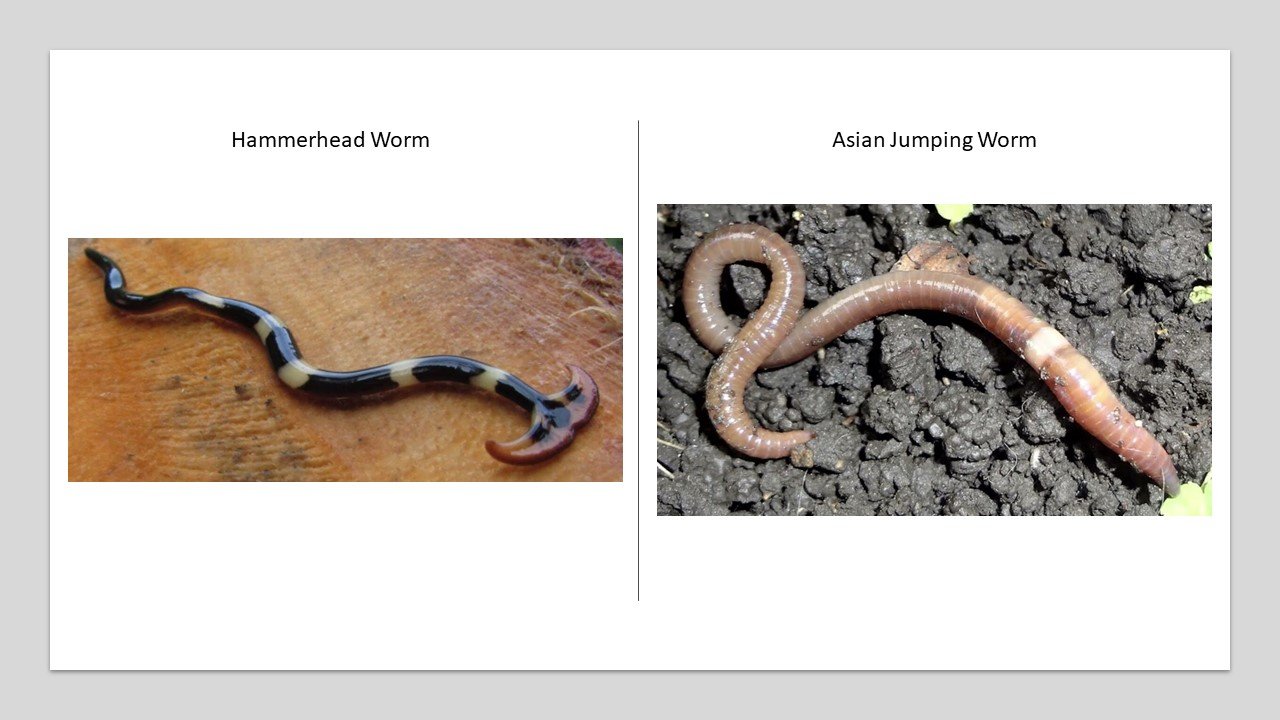
Invasive Insects to Look Out For

Did you know that almost all earthworms found in the Northeast are non-native? Invasives coming from Europe and Asia are altering the soil structure and chemistry of our forests. Today we will discuss two types of worms that are making there way to your backyards – the Asian jumping worm and the Hammerhead worm.
Asian jumping worms are currently most commonly found in the Southeast, Eastern Seaboard, Mid-Atlantic, Midwest, and are starting to venture into the Northeastern states. Asian jumping worms have been around for a long time, first being sited back in the 19th century. The issue with these worms is the rate at which they devour organic matter, stripping forests of the critical layer for seedlings and wildflowers. They grow twice as big, reproduce twice as quick, and can infest soils in high densities. Adult Asian jumping worms die after the first freeze but the cocoons, will survive the winter and hatch when temperatures reach 50 degrees consistently. The cocoons are about the size of a mustard seed and one worm can produce multiple cocoons without mating.
The telltale sign that you may have an infestation is a very uniform, granular soil that can be compared to coffee grounds from the worm castings. They can be found on the soil surface in the leaf litter which makes them easier to find. If you find these worms in your area, gather them in a bag, leave them in the sun for at least 10 minutes and then throw them away. To treat your lawn, dissolve 1/3 cup of dry mustard in a gallon of water and drench the area where the worms were spotted.
Native to Southeast Asia, hammerhead worms have been around since the 1900s being spotted in various places throughout the United States. They are most commonly found in tropical regions due to the high humidity. Hammerhead worms are light sensitive, so they feed at night and prefer cool, damp habitats. They are twice the length of a normal earthworm spanning between 12 to 15 inches and are very skinny. The worm secretes a potent neurotoxin that can cause skin irritation to humans and trigger nausea in animals that consume them. With their predatory and cannibalistic nature, hammerhead worms prey mainly consists of the common earthworm.
These worms typically hide under rocks and lay their eggs inside of plants. If you spot a hammerhead worm in your yard, place the worms in a jar or bag and spray a salt and vinegar solution into the bag, for added measure you can freeze the worms to ensure that they have dissolved before placing in the trash.
Both invasive worms, among others can help spread invasive plant species by disturbing the soil and killing other beneficial earthworms. Do your part to help slow the spread of these invasive species!

